Sue Perkins's Blog, page 8
January 24, 2019
Friday Focus
Today Belinda Mellor is going to tell us about being a fantasy author. Thanks for visiting, Belinda.
How did you choose the genre you write in? Or did it choose you? Tell us why you love writing in whatever genre you consider your favorite.I write myth- and folklore-inspired fantasy. I have always been fascinated by ‘story’ and story-telling: family stories, Bible stories, myths, legends, fairy tales. I was a voracious reader as a child, but C.S. Lewis’s Narnia stories were my absolute favourites and the ones I read every single year. The first school prize I received – for ‘creative expression’ was a hardback copy of The Snow Queen. It is still one of my most prized possessions. I was six. At age ten I won J.R.R. Tolkien’s ‘The Adventures of Tom Bombadil’ as an English prize. That was my introduction to Tolkien. Of course, that book is illustrated by Pauline Barnes, just as the Narnia stories are, so the connection made it very special to me. Learning my favourite authors had a fascination with mythology made me interested, so, as a teen I was reading Homer’s Illiad and Oddysey. The importance of mythology to humanity inspired me to study theology at university – I attended Bristol in the UK. Writing fantasy that explores human nature, relationships, life, death and all the big questions, seems natural to me.
What does literary success look like to you?Initial success would include: invitations to talk at writing festivals; a decent payout from the NZ library fund; finding my books in bookshops outside of New Zealand.‘Real’ success might include having a book on a national school curriculum (any nation!) – even though I mainly write adult fiction it is suitable for any age, so I’d really love that; having a respected artist (or two) illustrate my work, perhaps for a calendar, would be wonderful; a radio serialisation wouldn’t go amiss either.
Are you a full-out plotter? Are you a "let's see what happens" pantser? Or do you think you fall somewhere in between? I daydream all my stories before I begin writing (before I fall asleep, or in the bath, or while I’m driving) but, after that, anything can happen. I do tend to know where they are headed and what matters before I begin, but I rarely plot. Having said that, I attended a writers’ retreat last year and did a full-scale plot of a YA story that had gone astray. It had been sitting in a drawer since the Millennium because I had literally ‘lost the plot’! Knowing exactlywhat I was doing was really helpful in that instance.
Did you ever write a novel with a message to the readers, or at least, a message you hope your readers garnered from it? What was the book, and what was the message. Why did you want to express it?My two novels: Silvana - the Greening and Silvana - the Turning have a very definite message: humans who love, respect and cooperate with nature and the natural world, will reap benefits. Those who treat the environment as a commodity to be exploited will suffer and make others and future generations suffer too. I hope that by making the stories beautiful, I can show people how beautiful the natural world is. If even one person looks at a tree with new eyes as a result of reading my books it will have been worth writing them.
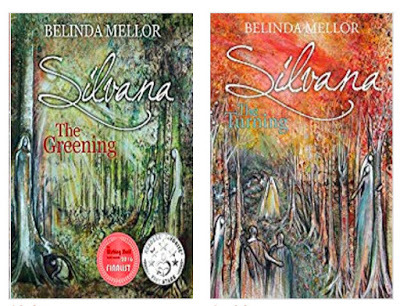
Silvana The Greening Silvana - The Turning
How does it make you feel when people who have read your books talk to you about them? Are you self-conscious, or does it inspire you?I LOVE hearing from people who enjoyed my work or were moved by it. The best times are when other creative people are inspired to write poetry or make art because of my writing, and I have been fortunate that that has happened several times. But I can feel a little self-conscious. On the other hand, there’s nothing I like better than to discuss my writing with someone who is really interested so it’s worth the initial discomfort!
What did you edit OUT of your most recent book (scene/character/etc)? Why?I wrote several thousand words of the backstory of the partner of a relatively minor character. Really, all the book needed was the fact that he had a wife, and that she was rather too old to start having children. But I do love what I wrote, so I suspect a novella might feature in the not-too-distant future. Fennua is a complex and fascinating character – a contented farmer who becomes a reluctant queen – and knowing her now as I do, she is much more real in the novel than she would have been if I had just written her in without knowing her well. Her story opens with her plucking a chicken (something I am not fond of doing) – I don’t even know where it all came from.
What have you never written about, but want to some day? Not so much a subject I’d like to ‘write about’, but a style: but I rather fancy having a go at a ‘who-done-it’ or a thriller. I think because it would mean learning new writing techniques and skills, which would be fun and very satisfying. Of course, it might be a cross-over: I did have an idea that involved gnomes, a circus, and also crimes that needed to be solved! A subterannean, albino Miss Marple if I recall correctly.
Did you write stories or make up stories as a child? Do you remember what any of them were about?Yes, I can’t remember when I didn’t write. The Adventures of Bonny Bunny was my first ‘book’. I must have been about seven. It was written in pencil in an exercise book, and illustrated too! Bonny Bunny foiled a burglary, if I remember rightly. That was followed by ‘Minimus Goes To The Moon’. Minimus was a mouse (you can see a pattern with the names, I suspect). MGTTM was a chapter book. I was very proud of that. So, talking animals dressed like people were my thing. I loved my cuddly toys, and disliked dolls, so that probably accounts for why I wrote about animals.
Do you have a favorite writing related quote?
‘Every story is true – some of them actually happened.’


Published on January 24, 2019 19:17
January 10, 2019
Friday Focus
Fury saw a ghostly man dressed as a pirate captain enter the cave, using the same entrance they had. Four others – who appeared to be his crew – followed him. Each of the ghosts carried a small chest on their shoulders and they ignored Fury and Eion as they passed by.
Oops Oops – wrong type of pirates.
Ebook pirates are undermining authors ability to earn money which then enables them to continue writing books for avid readers to read.
Have you ever been given a copy of an ebook by a friend and thought, well it's free because it's on the net? Not so! Ebooks have the same copyright restrictions as printed books. How would you feel if you had worked hard producing for instance a painting or a quilt and someone copied the painting and gave it away as a poster, or gave away the quilt pattern? You'd probably feel upset. Well contrary to belief Ebook authors are not rolling in money and their hard earned work is protected by copyright. So Beware! If you buy an Ebook, or you win an Ebook in a competition, check the publishers blurb and you'll see you only have the right to read. You do NOT have the right to copy the book and pass it on.
Regarding copyright infringement the FBI says the following:
"FBI Anti-Piracy Warning: Unauthorized Copying Is Punishable Under Federal Law."
So help the authors and don't accept free copies from these pirates. If you do the authors won't make the small amount of money they get from each sale which in turn means they may give up writing all together. Then where will you find books to read?
Oops Oops – wrong type of pirates.
Ebook pirates are undermining authors ability to earn money which then enables them to continue writing books for avid readers to read.
Have you ever been given a copy of an ebook by a friend and thought, well it's free because it's on the net? Not so! Ebooks have the same copyright restrictions as printed books. How would you feel if you had worked hard producing for instance a painting or a quilt and someone copied the painting and gave it away as a poster, or gave away the quilt pattern? You'd probably feel upset. Well contrary to belief Ebook authors are not rolling in money and their hard earned work is protected by copyright. So Beware! If you buy an Ebook, or you win an Ebook in a competition, check the publishers blurb and you'll see you only have the right to read. You do NOT have the right to copy the book and pass it on.
Regarding copyright infringement the FBI says the following:
"FBI Anti-Piracy Warning: Unauthorized Copying Is Punishable Under Federal Law."
So help the authors and don't accept free copies from these pirates. If you do the authors won't make the small amount of money they get from each sale which in turn means they may give up writing all together. Then where will you find books to read?

Published on January 10, 2019 02:30
January 3, 2019
Friday Focus
This week's Friday Focus has Marva Dasef answering questions on her writing. Marva writes fantasy books and other young adult books. I'm afraid I can't put all of her many book covers up but I've put up the ones I've read. Here we go.
Do you ever sit down with your baby (book) months after it's published, read it for pleasure and think, "I could have done that better"? What was it and what would you have done? OR... did you read it and think "Oh, this is great!" What was it you loved?
I wouldn’t have published unless I thought the book was great. That said, there’s always room for improvement. I just don’t dwell on that. “What’s done cannot be undone.”—Lady McBeth
What I have done is rearrange and combine other stuff to create a new book, which I put out under a different title. For example, “Tales of Abu Nuwas – Setara’s Genie” started as a few short stories about a girl named Cadida. It occurred to me that these fantastical Arabian-set stories would work as a continuous story as narrated by an old story teller, Abu Nuwas.
This is a frame story similar to the “1001 Arabian Nights” concept. Scheherazade tells stories to her new (murderous) husband, stopping at a crucial point in the story to buy herself another day of life.
I did the same thing, with the framing subplot being Abu Nuwas telling a young woman about Setara’s adventures with her fantastic gang of magical beings. While telling the stories, he’s also asking the young woman a few questions. When he discovers she’s committed to marriage to man she doesn’t love in order to save her mother’s life, Abu works the arranged marriage idea into one of Setara’s tales. He also knows a doctor who could treat the woman’s mother, thus freeing her from the marriage.
That’s what I did better. I reworked a set of short stories into a continuous novel-length book using a centuries’ old framing technique.
Are you a full-out plotter? Are you a "let's see what happens" pantser? Or do you think you fall somewhere in between? Describe your process in coming up with and executing a story idea.
I’m a plotter. I have a complete outline of the book chapter by chapter. Then I proceed to writing and change the outline, add new chapters, take out ones that don’t work, shuffle everything around, tweak the ending, add some characters, remove some characters. Yup, everything is completed plotted before I start to write, at which point my pants take over.
How old were you when you finished your first novel? Is that novel published today?
Carry the 2, take away 6, add the number of ells are in a mile... Let’s just say I was finished with my mundane career before I wrote any novels. Matter of fact, I only have a couple of books long enough to be considered short novels. I started my fiction writing with short stories. As my bio brags, I’ve published over 40 short stories and written a bunch more.
It’s not too weird to not have the 70K plus novels. Most of my books are for a middle-grade audience, so tend to be shorter.
Do you work any reality from your own life into your novels? If so, do you change it to make it more or less dramatic? How and why?
Yes indeed. In some situations, you only have your own experience to make it realistic. I’ve written about drowning in cold water. Yup, did that, but survived. Most of what I write about animals are from my own experience. One of my cats has a minor, yet important role as a witch’s familiar. I used the real cat’s name and character for the fictional one. Cornelius the Siamese with a wicked sense of humor. Of all the characters you've created, who is your favorite and why? Yes, we know you aren't supposed to have favorite children, but it's okay to have a favorite character. Be sure to tell us what book they are in.
Without a doubt, I love Kat, my inept teenage witch from the Witches of Galdorheim series. I definitely wrote from real experience (not the ability to do magic part) on her frustrations, joys, loves, and sense of observing others. She’s a better person than I am because I can write her character and remove my less desirable features.
She’s no goody-two-shoes and can certainly have a temper, but when it comes down to it, she always finds sympathy for even the worst character she’s facing unless that meanie is threatening her family and friends. That includes her all of her animal friends. Since her special power as a witch is the ability to communicate with animals, she’s an enforced vegetarian (not vegan). You can’t eat somebody with whom you just had a nice conversation.

How do you choose the names of your characters?
Quite a few of my characters had name changes while a work was in progress, and a lot of them in my middle-eastern fantasy stories. I had made up silly, meaningless names for most of the characters. They weren’t bad names, but just didn’t resonate. I completely revamped the two books giving all the characters names suitable to their culture and situation. So, Cadida (made that up) became Setara – meaning star; Bascoda (made that up) the Djinn became Basit – meaning one who enlarges; Gravella and Poltrice the demons became Azizah and Petros. Every character was renamed to a more meaningful name.
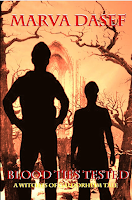 As for my big series (Galdorheim), Kat changed her name a couple of times. Katya, Katrina, maybe another. Anyway, at a writers’ workshop, an “agent” read a couple of pages of the first chapter and said something like, “The main character has a dull name while her brother is named Rune. That doesn’t make sense.” My answer was only in my mind as I said, “Thank you.” In my head, I was saying, “Look, you stupid twat, of course her name is mundane. Didn’t you even get that she’s a klutzy witch with bullying problems at school and part of that is her heritage?” And so on. The point I made with the mundane name is that she was different from the other witches. Duh. I wouldn’t have wanted that agent even if she was interested. Anyway, I changed the Kat’s name again, then went back to Katrina, and mostly referred to as Kat. I might have selected something different, but the name Katrina fit. People can read the series to figure out why Rune has a cool name, but his sister does not.
As for my big series (Galdorheim), Kat changed her name a couple of times. Katya, Katrina, maybe another. Anyway, at a writers’ workshop, an “agent” read a couple of pages of the first chapter and said something like, “The main character has a dull name while her brother is named Rune. That doesn’t make sense.” My answer was only in my mind as I said, “Thank you.” In my head, I was saying, “Look, you stupid twat, of course her name is mundane. Didn’t you even get that she’s a klutzy witch with bullying problems at school and part of that is her heritage?” And so on. The point I made with the mundane name is that she was different from the other witches. Duh. I wouldn’t have wanted that agent even if she was interested. Anyway, I changed the Kat’s name again, then went back to Katrina, and mostly referred to as Kat. I might have selected something different, but the name Katrina fit. People can read the series to figure out why Rune has a cool name, but his sister does not.How does it make you feel when people who have read your books talk to you about them? Are you self-conscious, or does it inspire you?
I’m essentially an introvert, so self-conscious doesn’t even begin to describe it. Besides, people never want to talk about my books unless they’re also involved in the creation process, such as my fabulous Alpha and Beta readers, volunteer nit-pickers, and enthusiastic idea suggesters. The ones who ask me about my books are mystified as to what the heck I’m writing about. A witch with an Orca friend, a smart-aleck, half-vampire brother, a frozen between life and death Sami father, an aunt in love with the Troll King, an old sorceress who’s not really a sorceress, but has secrets. Yeah, that’s just the first book. And don’t forget the cultural reference Easter eggs for the adult readers, and puns flying all over the place. Good times.
Did you ever write a novel with a message to the readers, or at least, a message you hope your readers garnered from it? What was the book, and what was the message. Why did you want to express it?
Every book I write has a message underlying the story. Sometimes people pick up on it, sometimes not. I hope to write an entertaining story in either case.
 An Example:
An Example:“Eagle Quest” is pretty obviously about bullying and being the odd kid out in school. The book is about a half-Native American boy who wants to delve into his roots. He decides to go on a spirit quest to gain insight. He’s joined by three unlikely school friends who go along expecting to just be back up without actually interfering in the quest. That gets shunted aside when the kids discover eagle poachers. The setting is Bear Valley Wildlife Preserve in southern Oregon. It just happens to be an eagle breeding area, so finding an eagle isn’t hard to do.
Has being a writer affected how you read other books?
Absolutely. I’ve been beat over the head about the proper way of doing things like story arcs, consistent tense, keeping your character names straight! When I read a book by someone famous or not so famous, I’m editing along the way, writing notes and spelling corrections. If the flaws in the book are too numerous, sometimes I just can’t go on. Hey, Writer! I work hard at this stuff. You have no excuse not to do the same.
Did you write stories or make up stories as a child? Do you remember what any of them were about? Tell us...
Made up stories, but I didn’t write them down. Are you kidding? My parents would have put me in a mental ward. I had an on-going story where I was Sheena, Queen of the Jungle. She had all sorts of adventures, all in my head, of course.
Marva is offering a free book of her Galdhoreim series to go with this article. For Friday 5th and Saturday 6th only. Get it now before it's too late!
BLOOD TIES TESTED FREE ON AMAZON JANUARY 5TH-6TH
https://www.amazon.com/dp/B07BKRVFHC
BIO:
 Marva was born in Eugene, Oregon and after a few years wandering, has return to her hometown. She graduated from the University of Oregon with a degree in Technical Communications. She spent the next umpteen years working as a technical writer and programmer/analyst. In 2005, she gave up all that glamour for the solitary life of a fiction writer.
Marva was born in Eugene, Oregon and after a few years wandering, has return to her hometown. She graduated from the University of Oregon with a degree in Technical Communications. She spent the next umpteen years working as a technical writer and programmer/analyst. In 2005, she gave up all that glamour for the solitary life of a fiction writer.She has published more than forty stories in a number of on-line and print magazines, with several included in Best of anthologies. She has several already published print and ebooks, and has produced seven audio books.
See descriptions of her published work at http://tinyurl.com/DasefAuthor/
Books in Ebook, Print, and Audio
Tales of a Texas Boy : Missing, Assumed Dead
The Witches of Galdorheim Series
Spellslinger :Bad Spelling Midnight Oil : Scotch Broom Blood Ties Tested
Books in Ebook and Print
Eagle Quest
First Duty : Ultimate Duty Mixed Bag : Mixed Bag II: Supersized Tales of Abu Nuwas 1 - Setara’s Genie
Tales of Abu Nuwas 2 - Faizah’s Destiny
<!-- /* Font Definitions */ @font-face {font-family:"Cambria Math"; panose-1:2 4 5 3 5 4 6 3 2 4; mso-font-charset:0; mso-generic-font-family:roman; mso-font-pitch:variable; mso-font-signature:3 0 0 0 1 0;} @font-face {font-family:Calibri; panose-1:2 15 5 2 2 2 4 3 2 4; mso-font-charset:0; mso-generic-font-family:swiss; mso-font-pitch:variable; mso-font-signature:-536859905 -1073697537 9 0 511 0;} /* Style Definitions */ p.MsoNormal, li.MsoNormal, div.MsoNormal {mso-style-unhide:no; mso-style-qformat:yes; mso-style-parent:""; margin-top:6.0pt; margin-right:0cm; margin-bottom:6.0pt; margin-left:0cm; text-indent:36.0pt; mso-pagination:widow-orphan; font-size:12.0pt; font-family:"Times New Roman",serif; mso-fareast-font-family:"Times New Roman"; mso-ansi-language:EN-US;} a:link, span.MsoHyperlink {mso-style-noshow:yes; mso-style-priority:99; mso-style-parent:""; color:blue; text-decoration:underline; text-underline:single;} a:visited, span.MsoHyperlinkFollowed {mso-style-noshow:yes; mso-style-priority:99; color:purple; mso-themecolor:followedhyperlink; text-decoration:underline; text-underline:single;} p {mso-style-noshow:yes; mso-style-priority:99; mso-margin-top-alt:auto; margin-right:0cm; margin-bottom:0cm; margin-left:0cm; margin-bottom:.0001pt; mso-pagination:widow-orphan; font-size:12.0pt; font-family:"Times New Roman",serif; mso-fareast-font-family:"Times New Roman"; mso-ansi-language:EN-US;} .MsoChpDefault {mso-style-type:export-only; mso-default-props:yes; font-size:10.0pt; mso-ansi-font-size:10.0pt; mso-bidi-font-size:10.0pt; font-family:"Calibri",sans-serif; mso-ascii-font-family:Calibri; mso-hansi-font-family:Calibri; mso-ansi-language:EN-US;} @page WordSection1 {size:612.0pt 792.0pt; margin:72.0pt 72.0pt 72.0pt 72.0pt; mso-header-margin:36.0pt; mso-footer-margin:36.0pt; mso-paper-source:0;} div.WordSection1 {page:WordSection1;} </style></div>--><img src="http://feeds.feedburner.com/~r/SuePer..." height="1" width="1" alt=""/>
Published on January 03, 2019 22:44
December 30, 2018
Happy New Year
Published on December 30, 2018 16:45
December 28, 2018
Friday Focus
I'm sorry this week's Friday Focus is late but it's mainly due to the festive season. As many writers are taking this opportunity to work on short story entries I thought I'd give a few tips for making sure you get things right before you send the story off.
This article is not going to tell you what to write – that's up to you. I hope to point out some of the pitfalls for you to avoid. First and foremost, make sure the type of story you wish to write is acceptable for the competition. For instance if the request is for romance stories, you are not going to get anywhere if you enter a murder mystery story.
So you've written your story, what next? Don't stop at the first draft. A short story is in many ways harder than writing a novel. This is mainly due to putting life into the number of words for the story. It's best to write the story, read it through to change any errors that jump out at you, then put it away for several days. When you take another look after a break you will be surprised how different the story looks and no doubt will decide to alter certain aspects.
Make sure your story flows and the continuity is correct. This means if your hero starts with green eyes, he should have green eyes throughout the story. If he's a grumpy person, then there must be a real reason for him to suddenly turn into a happy person.
The most important thing when entering a competition is to adhere to the rules. Read the rules carefully before writing your story, then read them again as the last thing you do before sending in your entry. If it restricts the words to 2000 then 2010 could automatically have you disqualified (and in many cases you could lose your entry fee). Exact spacing, specific font and many other rules are not there for your interpretation. They are there to make sure your entry and all others are equal so the quality of your story is what makes it a winner, not the presentation.
When the organisers request a SSAE (Stamped Self Addressed Envelope) of a specific size, make sure you send that size, not one that you think will do. Entering as a digital file means it is especially important to use the software as per the rules (this is usually MS Word). Sending your entry off in your favourite software might mean the judges are unable to open your document. One other thing, don't forget to send in your entry fee – or transfer the funds to the competition's account. You'd be surprised how many contestants overlook this important part of entering.
So to finish off the most important thing is to – READ AND FOLLOW THE RULES. Good Luck!
This article is not going to tell you what to write – that's up to you. I hope to point out some of the pitfalls for you to avoid. First and foremost, make sure the type of story you wish to write is acceptable for the competition. For instance if the request is for romance stories, you are not going to get anywhere if you enter a murder mystery story.
So you've written your story, what next? Don't stop at the first draft. A short story is in many ways harder than writing a novel. This is mainly due to putting life into the number of words for the story. It's best to write the story, read it through to change any errors that jump out at you, then put it away for several days. When you take another look after a break you will be surprised how different the story looks and no doubt will decide to alter certain aspects.
Make sure your story flows and the continuity is correct. This means if your hero starts with green eyes, he should have green eyes throughout the story. If he's a grumpy person, then there must be a real reason for him to suddenly turn into a happy person.
The most important thing when entering a competition is to adhere to the rules. Read the rules carefully before writing your story, then read them again as the last thing you do before sending in your entry. If it restricts the words to 2000 then 2010 could automatically have you disqualified (and in many cases you could lose your entry fee). Exact spacing, specific font and many other rules are not there for your interpretation. They are there to make sure your entry and all others are equal so the quality of your story is what makes it a winner, not the presentation.
When the organisers request a SSAE (Stamped Self Addressed Envelope) of a specific size, make sure you send that size, not one that you think will do. Entering as a digital file means it is especially important to use the software as per the rules (this is usually MS Word). Sending your entry off in your favourite software might mean the judges are unable to open your document. One other thing, don't forget to send in your entry fee – or transfer the funds to the competition's account. You'd be surprised how many contestants overlook this important part of entering.
So to finish off the most important thing is to – READ AND FOLLOW THE RULES. Good Luck!

Published on December 28, 2018 13:15
December 22, 2018
Merry Christmas
Published on December 22, 2018 16:16
December 20, 2018
Friday Focus
Do you like to read? Do you have a favourite author?
Most people enjoy a good read. Their choice may be thrillers, comic books, non-fiction, fantasy, sci-fi, romance or one or more of the many other genres available in digital, paperback, hardback or audio format. When readers have enjoyed a book and they turn the last page, they get a feeling of satisfaction. If the book has been a particularly good one they search to see if the author has written any more in a similar vein.
My questions are – how does the author know her readers have enjoyed the book? Was there anything in the book that the reader felt could have been handled better?
The sales levels answer part of the first question, more sales – happier readers, right? This is only a partial answer to the author knowing if their readers have enjoyed the book. So how can a reader tell the author how much they’ve enjoyed reading their work? Send an email? Write a letter? There is one way which is much easier and can also lead to more sales for the author. The main reaction to the author finding the book is entertaining a lot of people is not to rub the hands with glee and picture dollar signs floating from above. It’s the warm glow inside that all he hard work of writing and publishing the book has been worthwhile. Someone enjoyed it!
So how can you let the author know? Write a review.
Most online bookstores have the ability for a reader to post a review about ebooks and audiobooks. Your comment doesn’t have to be long, merely write about the parts you enjoyed the most or that you think it’s one of the best of this genre you have read. Did you read the book in paperback or hardback? Write a review on Amazon or Goodreads or any of the other many review sites online. Local newspapers also do reviews of books and might be willing to accept your views. If you enjoy reading let the author and the world know by writing your thoughts on the book on the places it is sold or where other reviews are placed. Go on. You know you can do it and the author will thank you – not personally but with fingers on keyboard they will carry on writing for your enjoyment.
 Sue Perkins
Sue Perkins
Published on December 20, 2018 13:04
December 13, 2018
Friday Focus
Today's Friday Focus is about self publishing and editing. Our thanks go to Wendy Scott, an award winning author from New Zealand, who has a lot of experience in this sphere. I know I'm going to read this post and see what tips I can pick up. Thanks Wendy.
Tips for Self-Publishing Authors - Get Your Book Professionally Edited My number one piece of advice for all indie-authors is - do not skimp on the editing.Do not add to the mountainous slush pile of poorly edited indie books that litter the literary horizon, and sully the indie brand.
Please don’t insult your readers by offering a sub-standard read. The excuse ‘I couldn’t afford an editor’ isn’t good enough. If you can’t afford to get it edited, then don’t release it into the public arena.

Editing is more than a quick computer spellcheck or a quick read-over by a friend. Friends and family members are unlikely to want to upset you by pointing out oddities within your manuscript. Many authors aren’t open to criticism, no matter how constructive, and become extremely defensive. A structural edit by a skilled editor will add polish and cohesiveness to your story. Their review should cover: consistency, logical story flow, pacing, characterisation, POV (point of view), passive sections, dialogue, repetition, and any genre-specific elements. The punctuation and spellchecking comes last.Here’s the process I follow for a full length novel.1. Outline - so I know how the story starts and ends (although any ideas are fluid and can change as the story develops).2. First ‘crappy’ draft (I don’t censor myself at all – basically I regurgitate words onto the page). Within the first draft I keep moving forward and jot down notes for any gaps I need to fill in later.3. I may do 10-20 passes before I’m satisfied that I have a good enough “first draft” to send to a structural editor. Sometimes I leave the manuscript to sit for a while so that I can review it with a fresher prospective.4. It’s important to connect with an editor who is familiar with the genre you are writing in, and has a proven track record. Their job is to enhance your author voice and coax the best story out of you – not rewrite it in their voice.5. After a structural edit your once pristine manuscript is likely to be covered in so much red ink it looks like a CSI lab prop. Entire sections may require a significant rewrite. Don’t despair, but work your way through the issues, and try to learn from them so you can make your next manuscript cleaner.6. Depending on how much rewriting is involved, there will be some passes back and forth between you the editor. Make sure you are crystal clear on the terms and conditions you’ve negotiated with the editor as you don’t want editing costs to spiral out of control if you are paying by the hour (strongly suggest you get a fixed quote based on word count). 7. The last edit is for spelling and grammar. There’s no point doing this earlier as entire sections may end up being culled from the story. My skill set does not include being an ‘editor’ so I’m reliant on the editors I choose. Luckily, I’ve connected with some awesomely talented editors. Note: there are different schools of style, and editors may not agree with each other. The key within your book is be consistent with whichever editing style is applied.8. When my manuscript is at the stage where all the fiddling is around where the commas go – it is time to move on.9. Beta readers are invaluable for finding oddities like missing words, extra words, wrong words, typos (pesky little varmints!!!), inconsistencies, stray speech marks, or how a character’s eye colour has changed between page twenty and eighty. An author is too close to their work and can miss the mistakes. It’s amazing how several different beta readers will pick up different mistakes. They may pick up on some bigger issues which may require a substantial rewrite and re-edit. Remember, be true to your unique author voice, there may be some suggestions, which you make a conscious choice not to include.10. Format into a novel (eBook and/or print).11. Next step is the proof-readers (I recommend) at least two before you publish. The more scrutiny the better. 12. Seek reviews (independent honest reviews). There are many genre-specific book blogging sites (some are paid). Independent validations of your work is crucial to help convince readers to take a chance on your book. 13. Readers’ Favorite offer a review service – if your book scores a 5* review, it’s awarded a Readers’ Favorite digital seal for your website and a high resolution version for your book cover. https://readersfavorite.com/book-reviews.htm
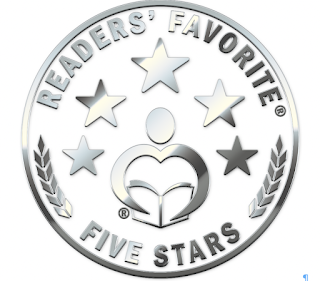
Readers’ Favorite also runs an annual International Book Award Contest.https://readersfavorite.com/annual-book-award-contest.htm

14. The annual Wishing Shelf Awards UK offers feedback from the readers (invaluable!!!).The children’s books I’ve entered have been read and reviewed by students from several UK schools and their teachers. They mark and judge on the cover, plot, and editing, and if you take the option you can receive a summary of their comments, plus the Wishing Shelf will post a review on Amazon and Goodreads. http://www.thewsa.co.uk/
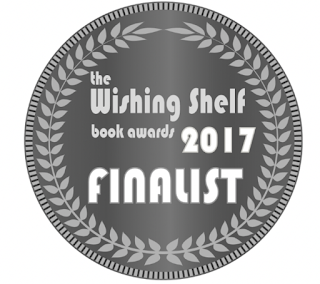
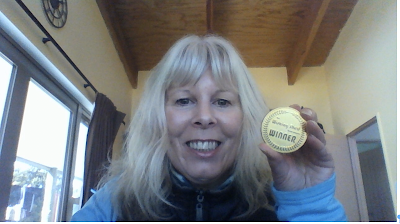
15. BooksGoSocial offer a paid service for Quality Marks (Gold, Silver, Bronze) – dependent on your books’ score, and are individually numbered. Your book is analysed by an editing software programme and by a human assessor. You also receive an in-depth report on the strengths and weaknesses within your manuscript.
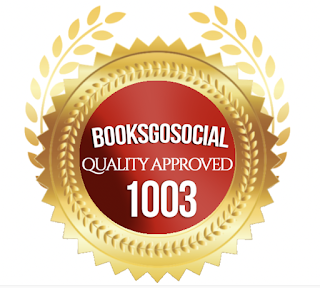
A poorly edited book is unlikely to win awards or receive great independent reviews or editorials that will encourage new readers to buy your book. Take the time and fully edit so your finished book is a delight to read, and of such high quality that readers will recommend it to others.

About the author Wendy Scott has a New Zealand Certificate in Science (Chemistry), which allows her to dabble with fuming potions and strange substances, satisfying her inner witch.Wendy writes fantasy and children’s novels.One of the creeds she lives by is to always – Live a life less ordinary!Gold Medal Winner: The Wishing Shelf Book Awards UK 2015Silver Medal Winner: International Readers’ Favorite Book Awards 2016Blue Treat Award: RRBC KCT International Literary Book Awards 2017 & 2018Finalist: The Wishing Shelf Book Awards UK 2016 & 2017Gold Quality Marks: BooksGoSocial 2017Finalist: Book Excellence Awards 2018
Please visit www.wendyjscott.comto learn more, read Wendy’s blog, sign up for her newsletter, or to leave her a message. She loves hearing from readers.
Pen NamesFantasy ~ Wendy Scott https://www.amazon.com/Wendy-Scott/e/B009B1N8NA/
Children’s ~ WJ Scott https://www.amazon.com/WJ-Scott/e/B00MGDXQ8COther (Romance/Paranormal) ~ Wendy Jayne https://www.amazon.com/Wendy-Jayne/e/B07F3M3KF2
<!-- /* Font Definitions */ @font-face {font-family:"Cambria Math"; panose-1:2 4 5 3 5 4 6 3 2 4; mso-font-charset:0; mso-generic-font-family:roman; mso-font-pitch:variable; mso-font-signature:3 0 0 0 1 0;} @font-face {font-family:Calibri; panose-1:2 15 5 2 2 2 4 3 2 4; mso-font-charset:0; mso-generic-font-family:swiss; mso-font-pitch:variable; mso-font-signature:-536859905 -1073732485 9 0 511 0;} @font-face {font-family:"Calibri Light"; panose-1:2 15 3 2 2 2 4 3 2 4; mso-font-charset:0; mso-generic-font-family:swiss; mso-font-pitch:variable; mso-font-signature:-536859905 -1073732485 9 0 511 0;} /* Style Definitions */ p.MsoNormal, li.MsoNormal, div.MsoNormal {mso-style-unhide:no; mso-style-qformat:yes; mso-style-parent:""; margin-top:0cm; margin-right:0cm; margin-bottom:8.0pt; margin-left:0cm; line-height:107%; mso-pagination:widow-orphan; font-size:11.0pt; font-family:"Calibri",sans-serif; mso-ascii-font-family:Calibri; mso-ascii-theme-font:minor-latin; mso-fareast-font-family:Calibri; mso-fareast-theme-font:minor-latin; mso-hansi-font-family:Calibri; mso-hansi-theme-font:minor-latin; mso-bidi-font-family:"Times New Roman"; mso-bidi-theme-font:minor-bidi;} a:link, span.MsoHyperlink {mso-style-priority:99; color:#0563C1; mso-themecolor:hyperlink; text-decoration:underline; text-underline:single;} a:visited, span.MsoHyperlinkFollowed {mso-style-noshow:yes; mso-style-priority:99; color:#954F72; mso-themecolor:followedhyperlink; text-decoration:underline; text-underline:single;} p.MsoListParagraph, li.MsoListParagraph, div.MsoListParagraph {mso-style-priority:34; mso-style-unhide:no; mso-style-qformat:yes; margin-top:0cm; margin-right:0cm; margin-bottom:8.0pt; margin-left:36.0pt; mso-add-space:auto; line-height:107%; mso-pagination:widow-orphan; font-size:11.0pt; font-family:"Calibri",sans-serif; mso-ascii-font-family:Calibri; mso-ascii-theme-font:minor-latin; mso-fareast-font-family:Calibri; mso-fareast-theme-font:minor-latin; mso-hansi-font-family:Calibri; mso-hansi-theme-font:minor-latin; mso-bidi-font-family:"Times New Roman"; mso-bidi-theme-font:minor-bidi;} p.MsoListParagraphCxSpFirst, li.MsoListParagraphCxSpFirst, div.MsoListParagraphCxSpFirst {mso-style-priority:34; mso-style-unhide:no; mso-style-qformat:yes; mso-style-type:export-only; margin-top:0cm; margin-right:0cm; margin-bottom:0cm; margin-left:36.0pt; margin-bottom:.0001pt; mso-add-space:auto; line-height:107%; mso-pagination:widow-orphan; font-size:11.0pt; font-family:"Calibri",sans-serif; mso-ascii-font-family:Calibri; mso-ascii-theme-font:minor-latin; mso-fareast-font-family:Calibri; mso-fareast-theme-font:minor-latin; mso-hansi-font-family:Calibri; mso-hansi-theme-font:minor-latin; mso-bidi-font-family:"Times New Roman"; mso-bidi-theme-font:minor-bidi;} p.MsoListParagraphCxSpMiddle, li.MsoListParagraphCxSpMiddle, div.MsoListParagraphCxSpMiddle {mso-style-priority:34; mso-style-unhide:no; mso-style-qformat:yes; mso-style-type:export-only; margin-top:0cm; margin-right:0cm; margin-bottom:0cm; margin-left:36.0pt; margin-bottom:.0001pt; mso-add-space:auto; line-height:107%; mso-pagination:widow-orphan; font-size:11.0pt; font-family:"Calibri",sans-serif; mso-ascii-font-family:Calibri; mso-ascii-theme-font:minor-latin; mso-fareast-font-family:Calibri; mso-fareast-theme-font:minor-latin; mso-hansi-font-family:Calibri; mso-hansi-theme-font:minor-latin; mso-bidi-font-family:"Times New Roman"; mso-bidi-theme-font:minor-bidi;} p.MsoListParagraphCxSpLast, li.MsoListParagraphCxSpLast, div.MsoListParagraphCxSpLast {mso-style-priority:34; mso-style-unhide:no; mso-style-qformat:yes; mso-style-type:export-only; margin-top:0cm; margin-right:0cm; margin-bottom:8.0pt; margin-left:36.0pt; mso-add-space:auto; line-height:107%; mso-pagination:widow-orphan; font-size:11.0pt; font-family:"Calibri",sans-serif; mso-ascii-font-family:Calibri; mso-ascii-theme-font:minor-latin; mso-fareast-font-family:Calibri; mso-fareast-theme-font:minor-latin; mso-hansi-font-family:Calibri; mso-hansi-theme-font:minor-latin; mso-bidi-font-family:"Times New Roman"; mso-bidi-theme-font:minor-bidi;} .MsoChpDefault {mso-style-type:export-only; mso-default-props:yes; font-size:11.0pt; mso-ansi-font-size:11.0pt; mso-bidi-font-size:11.0pt; font-family:"Calibri",sans-serif; mso-ascii-font-family:Calibri; mso-ascii-theme-font:minor-latin; mso-fareast-font-family:Calibri; mso-fareast-theme-font:minor-latin; mso-hansi-font-family:Calibri; mso-hansi-theme-font:minor-latin; mso-bidi-font-family:"Times New Roman"; mso-bidi-theme-font:minor-bidi;} .MsoPapDefault {mso-style-type:export-only; margin-bottom:8.0pt; line-height:107%;} @page WordSection1 {size:595.3pt 841.9pt; margin:72.0pt 72.0pt 72.0pt 72.0pt; mso-header-margin:35.4pt; mso-footer-margin:35.4pt; mso-paper-source:0;} div.WordSection1 {page:WordSection1;} /* List Definitions */ @list l0 {mso-list-id:634337655; mso-list-type:hybrid; mso-list-template-ids:1415065452 336134159 336134169 336134171 336134159 336134169 336134171 336134159 336134169 336134171;} @list l0:level1 {mso-level-tab-stop:none; mso-level-number-position:left; text-indent:-18.0pt;} @list l0:level2 {mso-level-number-format:alpha-lower; mso-level-tab-stop:none; mso-level-number-position:left; text-indent:-18.0pt;} @list l0:level3 {mso-level-number-format:roman-lower; mso-level-tab-stop:none; mso-level-number-position:right; text-indent:-9.0pt;} @list l0:level4 {mso-level-tab-stop:none; mso-level-number-position:left; text-indent:-18.0pt;} @list l0:level5 {mso-level-number-format:alpha-lower; mso-level-tab-stop:none; mso-level-number-position:left; text-indent:-18.0pt;} @list l0:level6 {mso-level-number-format:roman-lower; mso-level-tab-stop:none; mso-level-number-position:right; text-indent:-9.0pt;} @list l0:level7 {mso-level-tab-stop:none; mso-level-number-position:left; text-indent:-18.0pt;} @list l0:level8 {mso-level-number-format:alpha-lower; mso-level-tab-stop:none; mso-level-number-position:left; text-indent:-18.0pt;} @list l0:level9 {mso-level-number-format:roman-lower; mso-level-tab-stop:none; mso-level-number-position:right; text-indent:-9.0pt;} ol {margin-bottom:0cm;} ul {margin-bottom:0cm;} </style></div>--><img src="http://feeds.feedburner.com/~r/SuePer..." height="1" width="1" alt=""/>
Published on December 13, 2018 04:00
December 9, 2018
Ghoulies and Ghosties and things that go bump in the night
Over the last few weeks my new releases have centred on ghosts. The books are all for early teenage and possibly 9 to 12 year olds.
The first book is
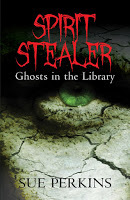 Spirit Stealer: Ghosts in the Library
Spirit Stealer: Ghosts in the Library
In 1908, Fader, a street urchin, takes shelter in the newly opened library to escape the cold winter. Months pass and the book characters emerge as playful phantoms in the nighttime library – all except for the green Spirit Stealer. This evil phantom steals the spirits of children who are accidentally locked in the library at night. Fader has to dodge the Spirit Stealer or his spirit will be taken.
A century later, Tyler is trapped by accident and tries to help a wraith called Amelia who still has half her spirit. Will they succeed in getting rid of the Spirit Stealer? If they do what will happen to the girl with half a spirit?
Available in ebook from Amazon and various other online outlets
Available in paperback from Copy Press, Nelson
The next two are books one and two of a series and both are set in New Zealand:
Fury's Ghost
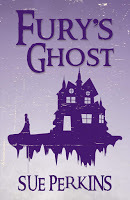 Fury's family leave the city for a six month visit to rural New Zealand. They stay in an old house belonging to her mother's family, but who is the ghostly figure in a hidden attic room and why is Fury the only one who can see her? She learns the ghost is the spirit of the original owner who has been trapped in the room for one hundred years.
Fury's family leave the city for a six month visit to rural New Zealand. They stay in an old house belonging to her mother's family, but who is the ghostly figure in a hidden attic room and why is Fury the only one who can see her? She learns the ghost is the spirit of the original owner who has been trapped in the room for one hundred years.
Fury promises to help the spirit lady to end her earthly existence. Problems arise when Fury delves into the past to find the answers she needs.
Available in ebook from Amazon and various other online outlets
Available in paperback from Copy Press, Nelson
Fury's Island
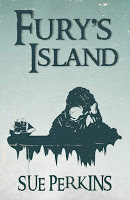 On holiday in Nelson, New Zealand, Fury meets Eion who offers to teach her to paddle board. Immediately attracted to him, she agrees. After basic instruction, he takes her out to Skull Island, a creepy looking rock some distance from the beach. No one has ever discovered a way up to the caves which look like eyes, but Fury finds a secret entrance and convinces Eion they should investigate. Their excitement rises as they discover tunnels and caves hidden beneath the ground, but neither is prepared for the arrival of ghostly pirates bringing their treasure chests to bury in one of the underground caves.
On holiday in Nelson, New Zealand, Fury meets Eion who offers to teach her to paddle board. Immediately attracted to him, she agrees. After basic instruction, he takes her out to Skull Island, a creepy looking rock some distance from the beach. No one has ever discovered a way up to the caves which look like eyes, but Fury finds a secret entrance and convinces Eion they should investigate. Their excitement rises as they discover tunnels and caves hidden beneath the ground, but neither is prepared for the arrival of ghostly pirates bringing their treasure chests to bury in one of the underground caves.
Available in ebook from Amazon and various other online outlets
Available in paperback from Copy Press, Nelson
As a special celebration of these releases
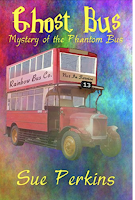 Ghost Bus: Mystery of the Phantom Bus
Ghost Bus: Mystery of the Phantom Bus
is available free for an unlimited time.
Jack's family has a new home, a converted bus depot. The original owners of the depot disappeared and the ghost of their last bus appears to take Jack and his sister on a journey to several different places to solve the mystery.
Available in ebook from Amazon
However some readers in some countries may find they are unable to download free from Amazon and if this is the case I suggest downloading from Prolific Works.
The first book is
 Spirit Stealer: Ghosts in the Library
Spirit Stealer: Ghosts in the LibraryIn 1908, Fader, a street urchin, takes shelter in the newly opened library to escape the cold winter. Months pass and the book characters emerge as playful phantoms in the nighttime library – all except for the green Spirit Stealer. This evil phantom steals the spirits of children who are accidentally locked in the library at night. Fader has to dodge the Spirit Stealer or his spirit will be taken.
A century later, Tyler is trapped by accident and tries to help a wraith called Amelia who still has half her spirit. Will they succeed in getting rid of the Spirit Stealer? If they do what will happen to the girl with half a spirit?
Available in ebook from Amazon and various other online outlets
Available in paperback from Copy Press, Nelson
The next two are books one and two of a series and both are set in New Zealand:
Fury's Ghost
 Fury's family leave the city for a six month visit to rural New Zealand. They stay in an old house belonging to her mother's family, but who is the ghostly figure in a hidden attic room and why is Fury the only one who can see her? She learns the ghost is the spirit of the original owner who has been trapped in the room for one hundred years.
Fury's family leave the city for a six month visit to rural New Zealand. They stay in an old house belonging to her mother's family, but who is the ghostly figure in a hidden attic room and why is Fury the only one who can see her? She learns the ghost is the spirit of the original owner who has been trapped in the room for one hundred years.Fury promises to help the spirit lady to end her earthly existence. Problems arise when Fury delves into the past to find the answers she needs.
Available in ebook from Amazon and various other online outlets
Available in paperback from Copy Press, Nelson
Fury's Island
 On holiday in Nelson, New Zealand, Fury meets Eion who offers to teach her to paddle board. Immediately attracted to him, she agrees. After basic instruction, he takes her out to Skull Island, a creepy looking rock some distance from the beach. No one has ever discovered a way up to the caves which look like eyes, but Fury finds a secret entrance and convinces Eion they should investigate. Their excitement rises as they discover tunnels and caves hidden beneath the ground, but neither is prepared for the arrival of ghostly pirates bringing their treasure chests to bury in one of the underground caves.
On holiday in Nelson, New Zealand, Fury meets Eion who offers to teach her to paddle board. Immediately attracted to him, she agrees. After basic instruction, he takes her out to Skull Island, a creepy looking rock some distance from the beach. No one has ever discovered a way up to the caves which look like eyes, but Fury finds a secret entrance and convinces Eion they should investigate. Their excitement rises as they discover tunnels and caves hidden beneath the ground, but neither is prepared for the arrival of ghostly pirates bringing their treasure chests to bury in one of the underground caves.Available in ebook from Amazon and various other online outlets
Available in paperback from Copy Press, Nelson
As a special celebration of these releases
 Ghost Bus: Mystery of the Phantom Bus
Ghost Bus: Mystery of the Phantom Busis available free for an unlimited time.
Jack's family has a new home, a converted bus depot. The original owners of the depot disappeared and the ghost of their last bus appears to take Jack and his sister on a journey to several different places to solve the mystery.
Available in ebook from Amazon
However some readers in some countries may find they are unable to download free from Amazon and if this is the case I suggest downloading from Prolific Works.

Published on December 09, 2018 17:50
December 6, 2018
Friday Focus
Proofreading is the final stage in presenting your manuscript (MS) for publication. Don’t skip it. Proofreading should happen after all other editing processes – and don’t skip them either.
For the purposes of this article I’m assuming that you have written a full-length novel, but the same principles apply to shorter forms. Do get your MS properly edited; you will probably have to pay for this service, but it is worthwhile. Editing looks at a piece of writing in its broadest sense, covering things like structure, plot, characterisation, and so on. An editor will point out such things as where the plot could be strengthened, when characters’ motivation is unclear, and how dialogue can be made more effective.
While editing looks at the big picture, proofreading looks at the detail – every single word and mark. Proofreading picks up typos, i.e. typographical errors, or accidental typing mistakes. These can be simple spelling mistakes, for example writing ‘though’ instead of ‘through’ or ‘hop’ instead of ‘hope’. It also picks up things like grammatical errors, inconsistencies, and incorrect punctuation, e.g. missing question marks.
It can be as difficult to proofread your own MS as it is to edit it. You are too close to the story, too involved with the characters and what they are doing, to be objective. When you look at the page, you can’t help seeing what you meant to write, not what is actually there. So the best advice is to get someone else to edit your story, make all the changes they suggest, and then get someone different to proofread it.
If for some reason you can’t get a professional proofreader, here are some tips for doing it yourself.
Give yourself some time. Put your MS aside for a while; perhaps work on another project. You need to get that piece of writing out of your head so you come to it from a fresh perspective.
Print out your work. Proofreading requires focussing on one word at a time. You must stop your eyes from running ahead, as they do when reading for pleasure. This is much easier when working from a printed copy than on screen.
Place a ruler under each line to hide the following text, and work your way down the page line by line. Use a pencil to point to one word at a time.
Read your work out loud. This forces you to read each word individually, and is also a good way to pick up things like repetitions, e.g. using your favourite word six times in one paragraph.
You will probably be amazed by how many little errors you will pick up!
Chrissie Ward
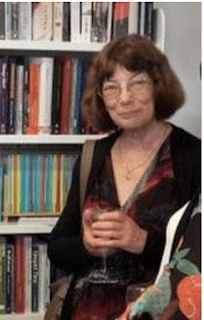
<!-- /* Font Definitions */ @font-face {font-family:"Cambria Math"; panose-1:2 4 5 3 5 4 6 3 2 4; mso-font-charset:0; mso-generic-font-family:roman; mso-font-pitch:variable; mso-font-signature:-536870145 1107305727 0 0 415 0;} @font-face {font-family:Calibri; panose-1:2 15 5 2 2 2 4 3 2 4; mso-font-charset:0; mso-generic-font-family:swiss; mso-font-pitch:variable; mso-font-signature:-536859905 -1073732485 9 0 511 0;} /* Style Definitions */ p.MsoNormal, li.MsoNormal, div.MsoNormal {mso-style-unhide:no; mso-style-qformat:yes; mso-style-parent:""; margin-top:0cm; margin-right:0cm; margin-bottom:0cm; margin-left:1.0cm; margin-bottom:.0001pt; line-height:200%; mso-pagination:widow-orphan; font-size:12.0pt; mso-bidi-font-size:11.0pt; font-family:"Times New Roman",serif; mso-fareast-font-family:Calibri;} .MsoChpDefault {mso-style-type:export-only; mso-default-props:yes; font-size:10.0pt; mso-ansi-font-size:10.0pt; mso-bidi-font-size:10.0pt; font-family:"Calibri",sans-serif; mso-ascii-font-family:Calibri; mso-fareast-font-family:Calibri; mso-hansi-font-family:Calibri;} @page WordSection1 {size:595.3pt 841.9pt; margin:72.0pt 72.0pt 72.0pt 72.0pt; mso-header-margin:35.4pt; mso-footer-margin:35.4pt; mso-paper-source:0;} div.WordSection1 {page:WordSection1;} </style><br />--></div><img src="http://feeds.feedburner.com/~r/SuePer..." height="1" width="1" alt=""/>
Published on December 06, 2018 04:00







